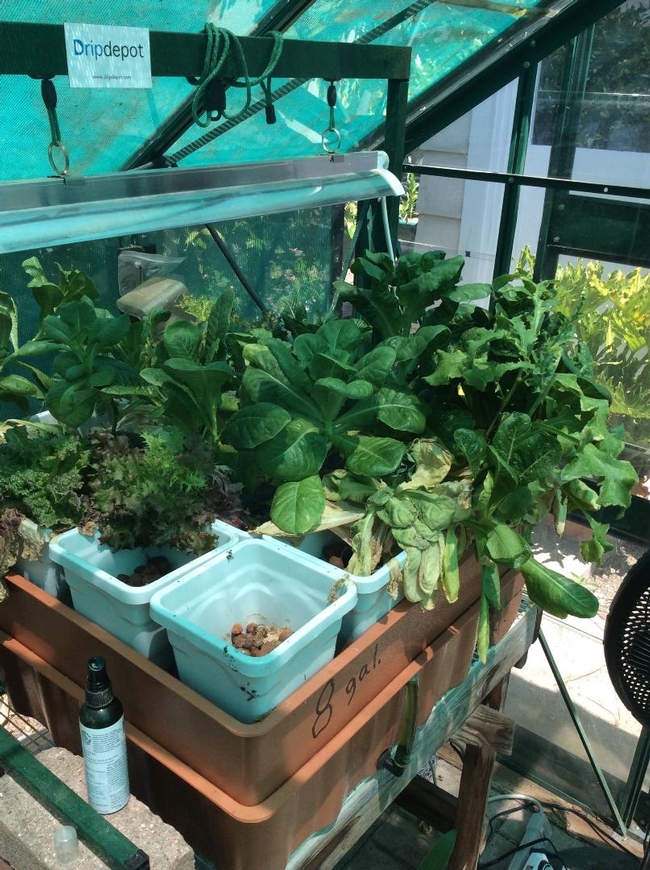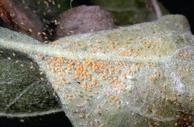Advice for the Home Gardener from the Help Desk of the
UC Master Gardener Program of Contra Costa County

MGCC Help Desk Reesponse: Thank you for contacting the UC Master Gardener Program Help Desk for help with your spider mite problem.
During hot weather, spider mites reproduce very quickly. The University of California reports that in hot weather conditions the entire life cycle (from newly laid egg to an egg-laying adult) can occur in just a week. Since each female mite can lay thousands of eggs which take only a day or two to hatch when the weather is hot, the population can quickly go from being almost unnoticeable to a full-blown infestation.
One of the first defenses against spider mites are several different beneficial insects. It is quite possible that these natural enemies were not able to reach the mites inside your green house, allowing the population to explode without check.
Your photo shows some plants that have been badly attacked by the spider mites and others that still look healthy. Keep in mind that spider mites feed on many types of vegetables and ornamental plants as well as on fruit trees, vines and berries. So there is a good chance that the spider mites will spread to some of your other plants in the greenhouse and are probably also present elsewhere in your garden.

UCANR photo
Insecticides are not a good choice for controlling the spider mites. Not only will the insecticides kill any beneficial insects that might be present, the active ingredient in some types of insecticides have actually been found to accelerate the reproduction cycle of the spider mites.
Insecticidal soaps and oils can help control spider mites, but may not be a particularly good option for food crops like lettuces.
One approach that you might want to consider would be to purchase some beneficial predatory mites and release them in the greenhouse. The predatory mites feed on the spider mites. They don't feed on foliage and so they won't become pests for your plants. If the spider mite population is eliminated, the predatory mites could move to a new location, or might simply die off. If you do an internet search for “predatory mites”, you will find places to mail order the predatory mites.
Also, you should be aware that cultural practices can also affect spider mite populations. The populations seem to increase in dusty conditions and water stressed plants are particularly vulnerable to attack. Judging from your photo, dust and water stress are probably not factors for your spider mite problem inside the greenhouse, but it's good to keep these cultural considerations in mind should the spider mites move to your outdoor spaces.
You can find more information about the use of insecticidal soaps and predatory mites to control spider mites at this UC website: http://ipm.ucanr.edu/PMG/PESTNOTES/pn7405.html
We hope that this information is helpful. You're welcome to contact us again if you have additional questions.
Help Desk of the UC Master Gardener Program of Contra Costa County (TKL)
Note: The UC Master Gardeners Program of Contra Costa's Help Desk is available year-round to answer your gardening questions. Except for a few holidays, we're open every week, Monday through Thursday for walk-ins from 9:00 am to Noon at 75 Santa Barbara Road, 2d Floor, Pleasant Hill, CA 94523, although we will be moving late July. We will notify you when that occurs. We can also be reached via telephone: (925) 646-6586, email: ccmg@ucanr.edu, or on the web at http://ccmg.ucanr.edu/Ask_Us/ MGCC Blogs can be found at http://ccmg.ucanr.edu/HortCoCo/ You can also subscribe to the Biog (//ucanr.edu/blogs/CCMGBlog/)